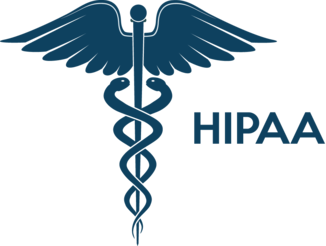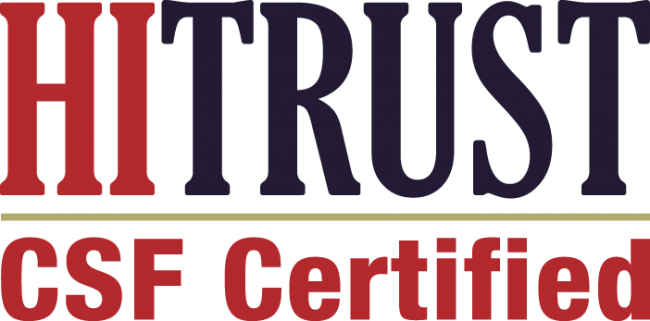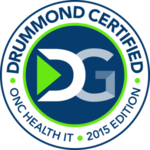The healthcare landscape is undergoing a fundamental transformation, with value-based care models becoming the new standard for delivering high-quality, cost-effective healthcare. At the heart of this evolution lies a critical component that healthcare organizations can no longer afford to overlook: Medicare Behavioral Health Integration (BHI) programs. As we navigate the complexities of modern healthcare delivery, the integration of behavioral health services has emerged as not just a clinical imperative, but a strategic advantage that drives measurable outcomes in value-based care arrangements.
The Growing Mental Health Crisis: A Numbers Game
The statistics paint a sobering picture of America’s behavioral health landscape. According to the Substance Abuse and Mental Health Services Administration (SAMHSA), 1 in 5 adults, adolescents, and youth experience mental health challenges—a figure that translates to millions of Americans struggling with conditions that significantly impact their overall health outcomes and healthcare costs.
But here’s where the story becomes more compelling: when behavioral health issues remain untreated or inadequately managed, they create a ripple effect throughout the healthcare system. Patients with untreated mental health conditions are more likely to:
- Experience frequent emergency department visits
- Require more frequent hospitalizations
- Have poorer management of chronic conditions like diabetes and hypertension
- Generate higher overall healthcare costs
This cascading effect makes behavioral health integration not just a moral imperative, but an economic necessity in value-based care models where providers assume financial risk for patient outcomes.
Understanding Medicare Behavioral Health Integration: The Foundation
Medicare’s Behavioral Health Integration program represents a paradigm shift in how we approach mental health care delivery. Since 2017, Medicare has made separate payments to physicians and non-physician practitioners supplying BHI services using the Psychiatric Collaborative Care Model (CoCM) approach, fundamentally changing how behavioral health services are delivered and reimbursed.
The program operates on several key principles:
Collaborative Care Model: Rather than operating in silos, primary care providers, behavioral health specialists, and care coordinators work together as an integrated team. This collaborative approach ensures that mental health care becomes a seamless part of overall healthcare delivery.
Proactive Population Health Management: BHI programs identify at-risk patients before crises occur, implementing preventive interventions that reduce the likelihood of emergency situations and expensive acute care episodes.
Evidence-Based Treatment Protocols: The program emphasizes the use of proven treatment methodologies, ensuring that interventions are both clinically effective and cost-efficient.
Systematic Measurement and Tracking: Regular assessment of patient outcomes using standardized tools allows for continuous improvement and demonstrates value to payers.
The Value-Based Care Connection: Where BHI Shines
BHI programs promote value-based care by expanding access to mental health services and engaging patients through proactive care planning. Coordinating behavioral health services to support chronic condition management can improve outcomes and reduce costs.
The synergy between BHI and value-based care becomes evident when we examine the core objectives both models share:
1. Population Health Management
Value-based care models require providers to manage the health of defined populations rather than treating individual episodes of care. BHI programs excel in this area by:
- Identifying high-risk patients through systematic screening
- Implementing preventive interventions before behavioral health issues escalate
- Coordinating care across multiple providers to ensure comprehensive treatment
2. Cost Reduction Through Prevention
It’s estimated that integrated behavioral health in the US can create $38-68 billion in healthcare savings annually. These savings come from three primary mechanisms:
- Decreased Emergency Department Utilization: Patients with well-managed behavioral health conditions are less likely to seek emergency care
- Reduced Hospital Admissions: Proactive mental health management prevents crises that would otherwise require inpatient treatment
- Better Chronic Disease Management: When anxiety and depression are addressed, patients are more likely to adhere to treatment plans for conditions like diabetes and heart disease
3. Improved Quality Outcomes
Quality metrics are central to value-based care arrangements, and BHI programs directly impact key performance indicators:
- Patient satisfaction scores improve when mental health needs are addressed
- Clinical outcomes for comorbid conditions show marked improvement
- Patient engagement and adherence to treatment plans increase significantly
Real-World Impact: The Numbers Don’t Lie
The evidence supporting BHI’s role in value-based care success continues to mount. Cost of care was reduced by $775,574 over six months and lowered by another $222,000 over 12 months in programs that successfully integrated behavioral health services with primary care.
These impressive cost reductions stem from several factors:
Reduced Crisis Interventions: When patients receive regular behavioral health support, the frequency of crisis situations drops dramatically. Emergency department visits for psychiatric emergencies can cost thousands of dollars per episode, costs that are largely preventable with proper BHI implementation.
Improved Medication Adherence: Patients with untreated depression or anxiety often struggle with medication compliance for chronic conditions. BHI programs address these underlying issues, leading to better management of diabetes, hypertension, and other costly chronic diseases.
Enhanced Care Coordination: Integrated care teams communicate more effectively, reducing duplicate services, conflicting treatment plans, and the inefficiencies that drive up healthcare costs.
Medicare’s 2025 Updates: Expanding Opportunities
In the CY 2025 Medicare Physician Fee Schedule (MPFS) Final Rule, new codes were added focusing on helping patients at risk of suicide and improving access to behavioral health services. These updates demonstrate CMS’s continued commitment to behavioral health integration and create new opportunities for healthcare organizations to participate in value-based arrangements.
The 2025 updates include:
- Enhanced reimbursement for suicide risk assessment and safety planning
- Expanded coverage for collaborative care management services
- New billing codes that better reflect the comprehensive nature of integrated behavioral health care
These changes create additional revenue opportunities for organizations that can effectively implement BHI programs while simultaneously improving patient outcomes, the perfect alignment for value-based care success.
Technology as the Enabler: The HealthViewX Advantage
While the clinical case for BHI is compelling, successful implementation requires sophisticated technology platforms that can manage the complexity of integrated care delivery. This is where solutions like HealthViewX’s BHI application become game-changers for healthcare organizations.
Medicare BHI offers a transformative approach to improving mental and physical health outcomes for millions of beneficiaries, but realizing this transformation requires the right technological foundation.
How HealthViewX BHI Application Drives Value-Based Care Success:
Automated Population Health Management: The platform identifies high-risk patients through sophisticated algorithms that analyze clinical data, social determinants of health, and behavioral patterns. This proactive approach aligns perfectly with value-based care’s emphasis on prevention over treatment.
Integrated Care Coordination: HealthViewX’s BHI application breaks down silos between primary care and behavioral health providers, facilitating seamless communication and coordinated care plans. This integration is essential for the collaborative care models that drive value-based care success.
Real-Time Analytics and Reporting: The platform provides comprehensive dashboards that track key performance indicators critical to value-based care arrangements, including:
- Patient engagement metrics
- Clinical outcome measures
- Cost reduction achievements
- Quality improvement indicators
Patient Engagement Tools: The application includes patient portals, automated reminders, and educational resources that keep patients actively engaged in their care—a crucial factor for value-based care success.
The Strategic Imperative: Why BHI Can’t Be Optional
As we look toward the future of healthcare delivery, several trends make BHI integration not just beneficial, but essential:
Regulatory Pressure
CMS is embarking on a multi-faceted approach to increase access to equitable and high-quality behavioral health services and improve outcomes for people covered by Medicare, Medicaid and private health insurance. This regulatory focus means that organizations not implementing BHI programs will find themselves at a competitive disadvantage.
Financial Risk
Value-based care arrangements increasingly include behavioral health quality measures and outcomes. Organizations that fail to address mental health needs effectively will face financial penalties and reduced shared savings.
Market Differentiation
As competition intensifies in value-based care markets, organizations with robust BHI programs will have significant advantages in:
- Attracting and retaining patients
- Demonstrating superior outcomes to payers
- Negotiating favorable contract terms
Clinical Excellence
The evidence is clear that integrated behavioral health care leads to better clinical outcomes. In an era where quality metrics drive reimbursement, this clinical advantage translates directly to financial success.
Building the Business Case: ROI of BHI in Value-Based Care
For healthcare executives evaluating BHI investment, the return on investment calculation extends beyond simple cost savings. Consider these value drivers:
Direct Cost Savings:
- Reduced emergency department utilization
- Decreased inpatient admissions
- Lower pharmaceutical costs through improved adherence
- Reduced duplicate services and unnecessary testing
Revenue Enhancement:
- Improved performance on value-based care quality metrics
- Higher patient satisfaction scores leading to increased referrals
- Better risk adjustment coding through comprehensive documentation
- Enhanced ability to manage risk in capitated arrangements
Long-term Sustainability:
- Reduced patient churn through improved satisfaction
- Better chronic disease management leading to long-term cost control
- Improved provider satisfaction and retention
- Enhanced reputation and market positioning
Implementation Roadmap: From Vision to Reality
Successfully implementing BHI programs requires a structured approach:
Phase 1: Foundation Building
- Assess current behavioral health capabilities
- Identify technology platform requirements (like HealthViewX BHI application)
- Develop staff training programs
- Establish workflow protocols
Phase 2: Pilot Program
- Select high-risk patient populations for initial implementation
- Deploy technology solutions with comprehensive training
- Monitor outcomes and refine processes
- Build evidence base for full-scale implementation
Phase 3: Full Integration
- Expand BHI services across all appropriate patient populations
- Integrate with existing value-based care contracts
- Optimize technology utilization for maximum efficiency
- Develop continuous improvement processes
Phase 4: Advanced Analytics
- Implement predictive analytics for proactive intervention
- Develop sophisticated population health management capabilities
- Create comprehensive quality reporting systems
- Build advanced patient engagement tools
The Competitive Advantage: Why Early Adopters Win
Organizations that implement comprehensive BHI programs today position themselves for significant competitive advantages:
Market Leadership: Early adopters establish themselves as innovators in integrated care delivery, attracting patients, providers, and payer partnerships.
Operational Efficiency: The learning curve for BHI implementation is significant. Organizations that invest early develop operational expertise that becomes increasingly valuable as competition intensifies.
Financial Performance: The cost savings and revenue enhancements from BHI programs compound over time. Early implementation maximizes the financial benefits.
Risk Management: As value-based care arrangements become more complex, organizations with proven BHI capabilities are better positioned to assume financial risk while maintaining profitability.
Measuring Success: Key Performance Indicators
Successful BHI programs require comprehensive measurement systems that track both clinical and financial outcomes:
Clinical Metrics:
- Depression screening rates and outcomes
- Anxiety assessment and management effectiveness
- Suicide risk identification and intervention success
- Patient functional improvement scores
- Chronic disease management indicators
Financial Metrics:
- Total cost of care reduction
- Emergency department utilization rates
- Inpatient admission frequency
- Medication adherence improvements
- Provider productivity measures
Quality Metrics:
- Patient satisfaction scores
- Care coordination effectiveness
- Provider satisfaction ratings
- Clinical outcome improvements
- Population health indicators
Looking Forward: The Future of Integrated Care
The trajectory is clear: behavioral health integration will become standard practice in value-based care arrangements. Organizations that recognize this trend and act decisively will thrive, while those that delay implementation will struggle to compete.
The Innovation in Behavioral Health (IBH) Model is a state-based model focused on specialty behavioral health practices that treat people with Medicaid and Medicare, demonstrating CMS’s continued commitment to expanding integrated care models.
The future belongs to healthcare organizations that can seamlessly blend physical and behavioral health services, creating comprehensive care experiences that improve outcomes while controlling costs. Technology platforms like HealthViewX’s BHI application will be essential tools in this transformation, providing the infrastructure necessary to deliver integrated care at scale.
Conclusion: The Time for Action is Now
Medicare Behavioral Health Integration programs represent more than just a clinical initiative, they are strategic imperatives for success in value-based care arrangements. The evidence is overwhelming: organizations that effectively integrate behavioral health services achieve better clinical outcomes, higher patient satisfaction, and superior financial performance.
The question facing healthcare leaders today is not whether to implement BHI programs, but how quickly they can do so effectively. With technology solutions like HealthViewX’s BHI application available to streamline implementation and optimize operations, the barriers to entry have never been lower.
As we move deeper into the value-based care era, organizations that recognize behavioral health integration as a cornerstone of their strategy will find themselves well-positioned for sustainable success. Those that continue to treat physical and mental health as separate domains will struggle to compete in an increasingly integrated healthcare landscape.
The opportunity is clear, the technology is available, and the financial incentives are aligned. The only question remaining is: will your organization lead the transformation or struggle to catch up?
Ready to transform your value-based care outcomes with comprehensive behavioral health integration? Discover how HealthViewX’s BHI application can streamline your implementation and optimize your results. Contact us today to learn more about building a sustainable competitive advantage through integrated behavioral health care.






